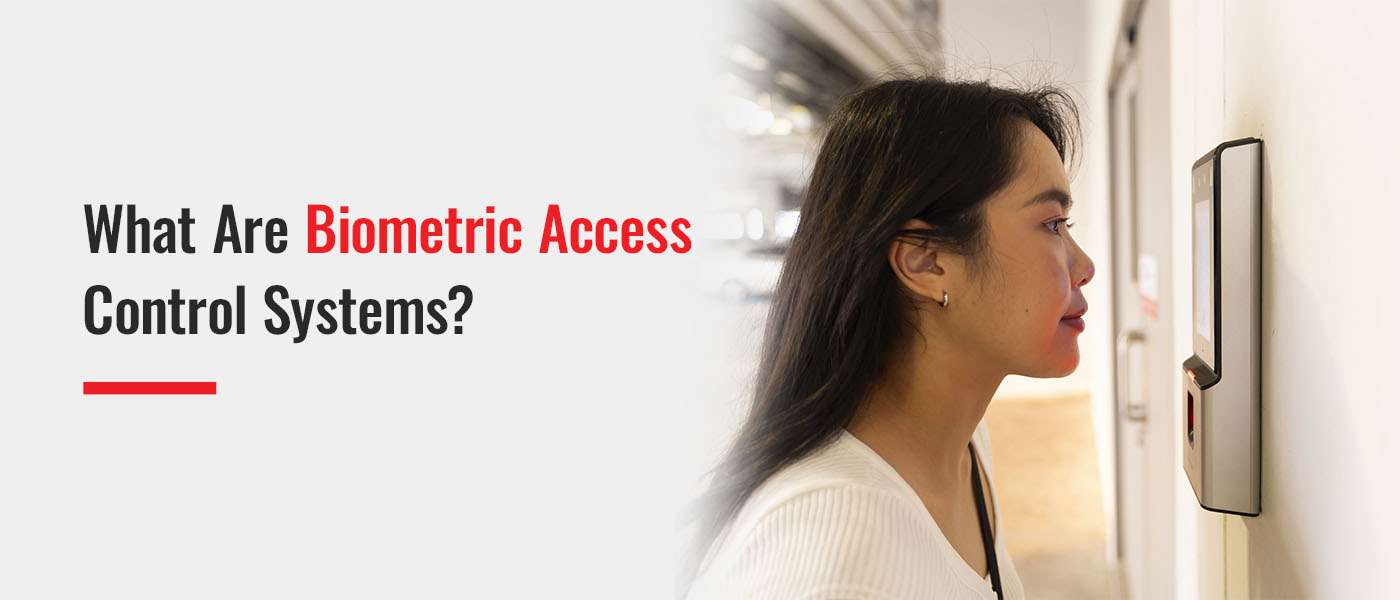What Are Biometric Access Control Systems?
Managing commercial buildings and residential properties has become more challenging with modern criminal schemes. Be on top of illicit tactics and increase security with one of the strongest and most efficient security tools. Count on reliable biometric access control to reduce risks of unauthorized access and deter prohibited activities.
How Biometric Access Control Works?
Biometric access control systems are a modern entry method that establishes someone’s identity based on different traits. These characteristics can be physical, like the face, iris, fingerprints and palm veins. It also constitutes behavioral features, such as voice patterns, signature dynamics and user keystrokes. To fully understand how this advanced entry system works, let’s take a look at the core aspects of biometric access control:
- Capturing unique traits for identification: Security teams set up the biometric control solution by getting the key characteristics of a user, either physical or behavioral, using a scanner. The biometric reader creates templates of the user’s identifications while the software stores the distinct traits in a secured database.
- Comparing user features with biometric templates: The biometric scanner evaluates user features with the characteristics stored in the database.
- Releasing signal for entry or refusal: If the user features match the biometric templates, the system flags a command to open the door lock. In the event of mismatched characteristics, the user is denied access.
- Combining multi-factor authentication (MFA) with biometric templates: Industries like health care, manufacturing, banking and finance level up their log-in process by incorporating MFA with biometrics for a comprehensive defense system.
- Adhering to privacy regulations: Ethical considerations must be carried out with biometrics, including voluntary user participation, informed consent, confidentiality, accuracy and ease of use. The process of obtaining, storing and evaluating biometric templates must follow local and national guidelines as well as standard industry practices.
Types of Biometric Entry Systems
Biometric entry systems vary depending on the traits captured and stored in the database. Some of the most popular types of access control for biometrics include:
- Facial recognition
- Fingerprint door locks
- Eye scan
Facial Recognition
Facial biometrics remains pivotal in confirming or disproving a user’s identity. In our facial recognition door locks, the user’s face is the main feature. The system uses 2D or 3D images of the person’s face to create mathematical codes for template storage in the database. The usage of facial recognition ensures fast and accurate identification.
While some factors implicate the accuracy of facial recognition door locks, like natural face changes and makeup, these still offer numerous advantages, such as being:
- Non-intrusive: Our facial recognition systems require no physical contact. This biometric system allows users to be checked from a distance, making it more hygienic.
- Convenient: Facial recognition door locks are ideal for companies with many employees because they are easy to use and quick to identify users.
- Scalable: Compared to other types of biometric access control, facial recognition systems are easy to integrate into existing infrastructure, making them suitable for large deployments.
- Cost-effective: Since facial recognition does not require a physical contact point, it reduces equipment inventory and installation expenses. Minimal equipment also means lower maintenance costs.
Fingerprint Access
In the fingerprint entry system, the scanner captures the ridge patterns and ridge characteristics of the ring finger or the thumb. The security software converts the acquired image into a biometric template, highlighting core fingerprint features, including the bifurcations and ridge endings.
The security software provides a reliable form of authentication, triggering a quick-release signal for a correct fingerprint match. However, fingerprints may be compromised if there’s a significant change in appearance or obstruction of physical characteristics, like swollen, damaged or dirty fingers.
Eye Scan
Eye scanners use a high-resolution camera to capture detailed distinct features of the eye and transform them into templates for biometric access systems. Although eye scan features contactless access points, contact lenses and glasses may compromise the efficiency and dependability of the tool.
Two of the widely used eye biometric entry systems are:
- Retinal scan lock: This security solution depends on the accurate patterns of the eye’s retina, specifically the unique layer of cells and the blood vessels. The retina scan lock scanner uses the retina image template stored by the software to provide entry to the premises.
- Iris scan lock: The iris scanner focuses on the colored part of the eye, acquiring the detailed patterns of the iris for reliable biometric authentication. Iris scan lock readers detect a subject at farther distances.
Benefits of Biometric Access Control Systems
Biometric entry controls have become one of the fastest-growing security systems by combining biological measurements with access point management. Here are some key advantages of using this reliable protection method:
- Improved security: Biometric entry controls utilize the unique characteristics of the body that are difficult to replicate. Unlike traditional access keys or passwords, biometrics are unlikely to be copied, making it highly secure from unauthorized access.
- Added convenience: Apart from being reliable, these are user-friendly security solutions. The access controls depend on the stored user characteristics, allowing seamless identification in a short period. The advanced features of the system offer convenience compared to manual identification processes.
- Reduced expenses: Cut costs on additional staff with a robust security solution. Instead of hiring security personnel who conduct manual checks, biometric access control solutions streamline the overall process automatically and more securely. It also reduces expenses on physical door hardware like keys and keycards.
- Easy auditing: An audit trail is essential in security administration. Using biometrics enables easy and accurate user identification in the event of a breach.
- Highly scalable: More businesses are going digital, using scalable systems to optimize operations. Biometric access controls are scalable security solutions, allowing companies to adapt to the ever-changing digital landscape.
Biometric Access Control System Applications for Businesses
Biometrics have advanced the security of many industries and businesses. Along with protecting sensitive data from unauthorized access, biometric entry control systems offer remarkable convenience for businesses of varying sizes. They cater to small startups or even large corporations needing a secure and scalable solution that streamlines access to authorized users while safeguarding your company’s assets.
By utilizing distinct biological characteristics for authentication and access, the solution reduces security risks and breaches, facilitating a secure business for various applications, including:
- International banks
- High-end facilities
- Phone security systems
- Science laboratories
- Office buildings
Looking to Enhance Your Security? Contact Wayne Alarm Systems
Revolutionize your business’s security features with a reliable biometric access control system from Wayne Alarm Systems. As your trusted partner in security, we share your commitment to safety through advanced entry control solutions.
Contact us now for a free consultation, and let’s discuss your business security needs.




